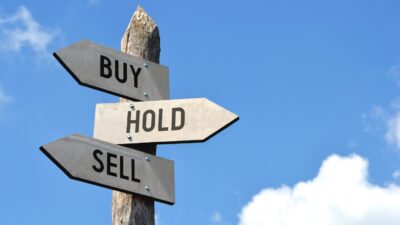According to MoneyFarm, someone aged 30 should have around £51,434 in savings. But even from a standing start, there’s a lot of time to build up a meaningful passive income stream.
With 37 years to retirement, putting aside some of a monthly salary and investing it can bring significant returns. But there are some things investors should consider before getting started.
Dividend stocks
One of the best ways of earning passive income is by investing in businesses that distribute part of their earnings to shareholders. And real estate investment trusts (REITs) are a good example.
Should you invest £1,000 in Games Workshop right now?
When investing expert Mark Rogers has a stock tip, it can pay to listen. After all, the flagship Motley Fool Share Advisor newsletter he has run for nearly a decade has provided thousands of paying members with top stock recommendations from the UK and US markets. And right now, Mark thinks there are 6 standout stocks that investors should consider buying. Want to see if Games Workshop made the list?
REITs are companies that make money by owning and leasing properties. They don’t pay tax on their profits, but they have to return 90% of their taxable income to investors as dividends.
Please note that tax treatment depends on the individual circumstances of each client and may be subject to change in future. The content in this article is provided for information purposes only. It is not intended to be, neither does it constitute, any form of tax advice.
Primary Health Properties (LSE:PHP) is a good example. The business owns and leases a portfolio of GP surgeries in the UK and Ireland.
Right now, the stock comes with a 6.8% dividend yield. That’s high relative to other stocks and while it could be a sign investors are concerned about sustainability, my view is positive.
Durable growth
In general, REITs want to avoid two things – unoccupied buildings and rent defaults. But Primary Health Properties gets most of its rent from the NHS, which helps with both of these concerns.
In terms of occupancy, I think the danger of the NHS looking to build its own facilities is fairly low. This would be expensive and complicated, meaning the outlook seems positive here.
The risk of a rent default is also low. But beyond this, Primary Health Properties can probably increase rents incrementally each year without worrying about its tenants being unable to pay.
That should result in higher rental income — meaning higher dividends for shareholders — and I don’t think it should be that difficult to achieve. But with investing, there are always risks.
Risks
It’s not unusual for REITs to have a lot of debt. But with a loan-to-value ratio of 47%, Primary Health Properties is heavily leveraged even by those standards.
That’s probably the biggest risk investors have to contend with. And the worst-case scenario for the business would probably be having to issue shares to reduce its liabilities.
This would almost certainly cause the dividend per share to fall. However, lower interest rates and rising property prices could well help the company stop this developing into a big problem.
It’s also worth noting that Primary Health Properties has a history of managing its debt well. As a result, it has increased its dividend for 28 consecutive years.
From £250 to £49,511
I think Primary Health Properties should be able to grow its dividend by 2% per year over the long term. That’s below what it has managed to achieve over the last decade.
On that basis, investing £250 per month results in something that returns £49,511 per year after 37 years. That assumes the stock continues to trade with a 6.8% dividend yield.
It might not – the share price could go up faster than the dividend, causing the yield to drop. In that case, I’d need to find other opportunities – but this is the sort of return I’d aim for.







